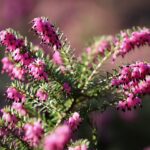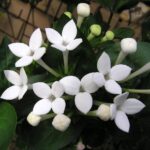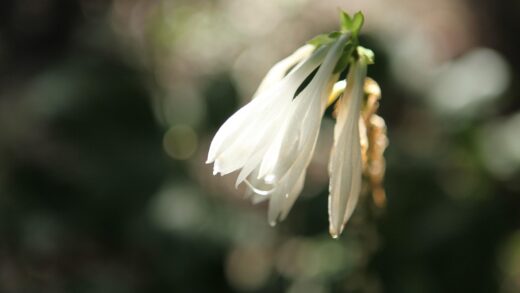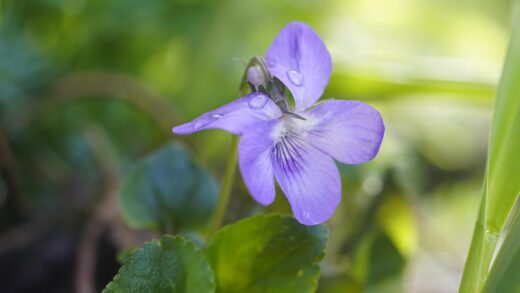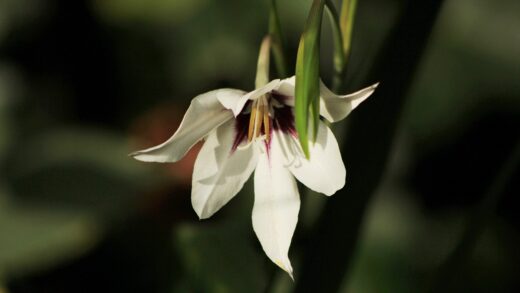The successful establishment of alpine heath in the garden hinges on a thoughtful approach to planting, from the initial selection of the site to the precise technique used to place the plant in the ground. This foundational stage is critical, as a well-planted heath will establish its root system more quickly, leading to a more resilient and floriferous plant in the long run. Similarly, understanding the methods of propagation is immensely rewarding, allowing a gardener to multiply their stock, create large drifts of color, or share this wonderful plant with others. Erica carnea can be propagated through several reliable methods, primarily from cuttings or by layering, each with its own specific requirements and timing. Mastering these techniques transforms a simple purchase into a sustainable and ever-expanding feature of the garden, ensuring a legacy of winter and spring beauty.
Before any planting can begin, a thorough assessment and preparation of the chosen site is paramount. This process is not merely about digging a hole, but about creating an environment where the alpine heath will thrive from day one. As this species demands excellent drainage, the soil structure must be a primary consideration. If the existing soil is heavy clay or tends to become waterlogged, it must be amended with organic matter like compost and inorganic material such as horticultural grit to improve its porosity. The goal is to create a loose, friable medium that allows water to pass through freely while retaining enough moisture to support the plant’s needs.
The timing of planting is another crucial factor that can significantly influence the plant’s ability to establish itself. The ideal times to plant Erica carnea are in the autumn or early spring. Autumn planting allows the root system to grow and establish itself in the warm soil before the onset of winter, giving the plant a head start for the following season. Spring planting is also effective, but may require more diligent watering throughout the first summer to ensure the young plant does not suffer from drought stress. Avoid planting during the heat of summer or when the ground is frozen or waterlogged, as these conditions place undue stress on the plant.
When spacing multiple plants to create a groundcover effect, it is important to consider the mature spread of the specific cultivar. Planting them too far apart will leave gaps for weeds to grow for several years, while planting them too close together can lead to overcrowding and poor air circulation. A general guideline is to space plants at a distance roughly equal to their expected mature width, which is typically between 45 to 60 centimeters. This allows them to grow together into a seamless carpet over two to three seasons, effectively covering the ground and creating a cohesive visual display.
Selecting the ideal planting site
The first step in the planting process is a careful evaluation of the potential locations within your garden. Alpine heath is a sun-loving plant, and its performance is directly linked to the amount of light it receives. An ideal site will be exposed to full sun for at least six hours per day. While it can tolerate a small amount of light shade, particularly in very hot climates, insufficient sunlight will result in leggy growth, reduced flowering, and a general lack of vigor. Observe the path of the sun across your garden at different times of the day to identify a spot that meets this primary requirement.
Beyond sunlight, the topography and drainage of the site must be assessed. Erica carnea originates from mountainous regions and has a natural intolerance for “wet feet.” Therefore, a location with a natural slope is often ideal, as it inherently provides excellent surface drainage. Flat, low-lying areas that collect water after heavy rain should be avoided at all costs. If your garden is predominantly flat, consider creating raised beds or berms to elevate the planting area, thereby ensuring that the roots are never sitting in saturated soil. This simple structural change can make the difference between a thriving plant and one that succumbs to root rot.
Consider the role the alpine heath will play in the broader garden design. Its low, mounding habit makes it perfectly suited for the front of borders, along pathways, or in rockeries. When planted on a slope or atop a retaining wall, its branches will cascade gracefully over the edge, softening hard lines and creating a naturalistic effect. Think about the year-round appearance; its evergreen foliage provides constant structure and texture, which can be used as a foil for other seasonal plants. The site should allow the plant to fulfill its design purpose without being overshadowed by larger, more aggressive neighbors.
Finally, evaluate the soil’s pH at the chosen site. While Erica carnea is famously more tolerant of alkaline conditions than other heathers, it still performs best in a slightly acidic to neutral pH range (approximately 6.0 to 7.5). You can use a simple home testing kit to determine the pH of your soil. If the soil is extremely alkaline (above 8.0), it may be beneficial to amend it with ericaceous compost or sulphur chips to lower the pH slightly. However, for most garden soils, the plant’s natural adaptability means that major pH adjustments are unlikely to be necessary, allowing you to focus primarily on improving drainage and soil structure.
The step-by-step planting process
Once the site has been chosen and the soil prepared, you are ready for the physical act of planting. Begin by digging a planting hole that is roughly twice as wide as the plant’s root ball but no deeper. The width of the hole is important as it loosens the surrounding soil, making it easier for the new roots to penetrate and expand outwards. It is a common and detrimental mistake to dig the hole deeper than the root ball, as this can cause the plant to settle over time, sinking below the soil surface and leading to stem rot and other issues.
Carefully remove the alpine heath from its nursery pot, taking care not to damage the delicate root system. If the plant is root-bound, with a dense mat of roots circling the bottom of the pot, it is crucial to gently tease them apart with your fingers or a small hand fork. This encourages the roots to grow out into the new soil rather than continuing to circle in on themselves, which would inhibit the plant’s ability to establish properly. Loosening the roots signals to the plant that it has found a new, more expansive home.
Place the plant in the center of the prepared hole, ensuring that the top of its root ball is level with or very slightly proud of the surrounding soil surface. Use a straight edge, like a rake handle or a piece of wood, laid across the hole to accurately check the planting depth. Once you are satisfied with the positioning, begin backfilling the hole with the excavated and amended soil. Gently firm the soil around the root ball with your hands to eliminate any large air pockets, which can dry out the roots.
Immediately after planting, water the alpine heath thoroughly and deeply. This is a critical step that helps to settle the soil around the roots and provides the plant with the moisture it needs to recover from the stress of transplanting. Apply enough water to saturate the entire root zone. For the first few weeks after planting, and especially during dry weather, monitor the soil moisture and water regularly to ensure the plant does not dry out while its root system is becoming established in its new environment.
Propagation through layering
Layering is a wonderfully simple and highly effective method for propagating alpine heath, and it often occurs naturally without any intervention. This technique involves encouraging a low-lying stem to develop its own roots while it is still attached to the parent plant. The best time to begin layering is in the spring or late summer. Start by selecting a healthy, flexible, and non-flowering stem that is long enough to be bent down to touch the ground comfortably. A young, vigorous stem from the current or previous season’s growth will root most readily.
Once you have chosen a suitable stem, prepare the soil in the spot where the stem will make contact. Clear away any weeds or debris and cultivate the soil lightly to create a loose and friable rooting medium. You can improve the chances of successful rooting by incorporating a small amount of sharp sand or compost into this area. Carefully bend the selected stem down to the prepared soil. At the point of contact, you can slightly wound the underside of the stem by making a small, shallow nick with a sharp, clean knife. This minor injury encourages the formation of rooting hormones at that specific point.
To secure the stem in place and ensure it remains in constant contact with the soil, you will need to peg it down. A piece of bent wire, such as a U-shaped pin or even a small, flat stone, can be used to hold the wounded section of the stem firmly against the soil. After pegging it down, cover this section of the stem with a few centimeters of the prepared soil, leaving the leafy tip of the stem exposed to the light. Water the area gently and be sure to keep it consistently moist, but not waterlogged, throughout the rooting process.
Patience is key with layering, as it can take several months, and sometimes up to a year, for a substantial root system to develop. You can check for rooting by very gently tugging on the layered stem; if you feel resistance, it is a good sign that roots have formed. Once the new plant has a well-developed root system and is showing signs of independent growth, it can be severed from the parent plant with a sharp pair of secateurs. The newly independent plant can then be carefully lifted and transplanted to its new location in the garden.
Propagation from semi-hardwood cuttings
Propagating alpine heath from semi-hardwood cuttings is a highly productive method that allows you to create a large number of new plants from a single parent. The ideal time to take these cuttings is from mid-summer to early autumn, when the current season’s growth has started to mature and become slightly firm, but has not yet turned fully woody. This stage of growth provides the cutting with enough stored energy to form roots while still being pliable enough to do so readily. Look for healthy, vigorous, and non-flowering shoots to use as your cutting material.
Using a sharp, sterilized knife or secateurs, take cuttings that are approximately 5 to 10 centimeters long from the tips of the stems. Make a clean cut just below a leaf node, which is the point on the stem where a leaf emerges. Carefully strip the leaves from the lower half of the cutting, as this is the portion that will be inserted into the rooting medium, and any leaves left below the surface would rot. To further encourage root development, you can dip the base of the cutting into a rooting hormone powder, though this is not always strictly necessary for Erica carnea.
Prepare a pot or tray with a suitable rooting medium. An ideal mixture is a 50/50 blend of peat-free compost and sharp sand or perlite, which provides both moisture retention and the excellent drainage that is critical for preventing the cuttings from rotting. Water the medium thoroughly and allow it to drain before inserting the cuttings. Make small holes in the medium with a dibber or a pencil and insert the prepared cuttings, ensuring that the stripped lower portion is fully submerged. Gently firm the medium around each cutting to provide support.
Place the pot or tray of cuttings in a location that is bright but out of direct sunlight, which could scorch them. To maintain a humid environment around the cuttings, which aids in rooting and prevents them from drying out, you can cover them with a clear plastic bag or place them in a propagator. It is important to ventilate them periodically by removing the cover for a short time each day to prevent fungal growth. Keep the rooting medium consistently moist but not soggy. Roots should begin to form within six to ten weeks, and once the cuttings show signs of new top growth and have a healthy root system, they can be potted on individually to grow further.
Post-propagation care for young plants
Once your alpine heath layers have been separated or your cuttings have successfully rooted, they enter a new and crucial phase of development. These young plants are not yet ready for the rigors of the open garden and require a period of careful nurturing to build up their strength. For newly potted cuttings, the primary goal is to encourage the development of a robust root system that can support future growth. Place them in a sheltered location, such as a cold frame or an unheated greenhouse, where they are protected from harsh weather conditions like strong winds and heavy rain.
Consistent moisture is vital for these juvenile plants. Their small root systems are not yet extensive enough to seek out water from deep within the soil, making them vulnerable to drying out. Check the pots regularly, especially during warmer weather, and water them whenever the top layer of compost begins to feel dry. However, the golden rule of drainage still applies; ensure the pots are never left standing in water, as this will quickly lead to root rot. A balance of consistent moisture and excellent aeration is the key to healthy root development during this stage.
As the young plants grow and their roots begin to fill their initial pots, they will need to be “potted on” into slightly larger containers. This gives the root system more room to expand and provides access to fresh nutrients. This step is typically needed in the spring following their propagation. Use the same free-draining compost mix as before, and choose a new pot that is only one size larger than the current one. Moving a small plant into a vastly oversized pot can be counterproductive, as the large volume of soil can stay wet for too long, creating unfavorable conditions for the roots.
After a full season of growing on in their new pots, the young alpine heath plants will have developed into strong, well-rooted individuals ready for their final positions in the garden. The best time to plant them out is in the autumn or the following spring. Hardening them off before planting is a crucial final step. This involves gradually acclimatizing the plants to outdoor conditions over a week or two, by leaving them outside for increasingly longer periods each day. This process toughens up the foliage and prevents the shock of a sudden move from a sheltered environment to the open garden.

